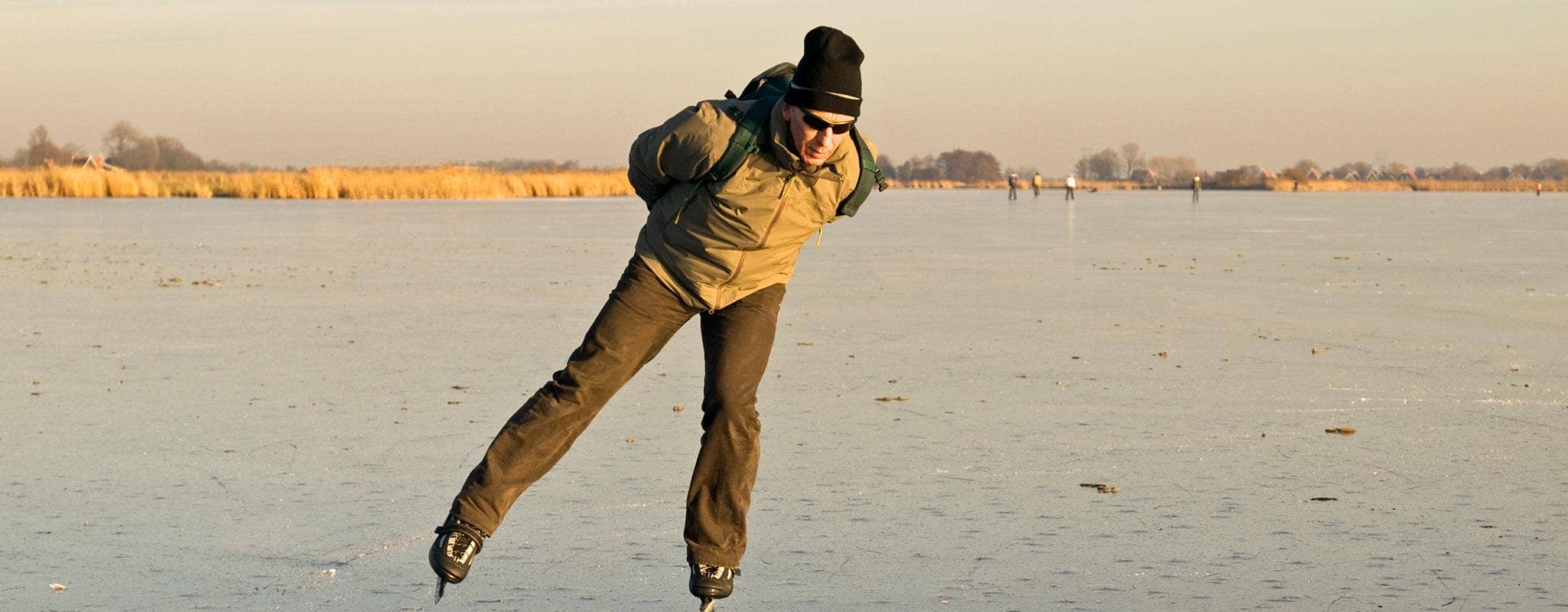Ready, set…Ice skate


Ice skating has long been considered the quintessential cold weather activity: It's fun, it gets you moving (indoors or out), and can be a great cardiovascular workout for all ages that leads to a strengthened core, toned legs, and increased joint and muscle flexibility. Haven't strapped on the blades in a while – or ever? No worries. We’ve consulted experts who will help you gear up and get fit with this calorie-burning (and smile-inducing) winter sport.
“You will benefit physically from skating, even if you feel like you’re doing very little,” says Cindy Jensen, Program Supervisor for Ice and Sports at Lane Events Center in Lane County, Ore., who has 20 years of ice skating coaching experience. “You use all of your muscle groups.”
Gear up
Skaters should dress appropriately for the cold temperatures that go along with the sport, whether you’re skating in an indoor rink or outside on a frozen pond. In either environment, bundle up with loose-fitting layers to keep you warm but still allow you to move freely across the ice.
World and Olympic ice skating coach Kathy Casey, who has worked with figure skating champions Scott Davis and Scott Hamilton, recommends buying a pair of figure skates in the $100 range from a local skate shop, as rental skates often have dull blades and don't fit well. If you’re hesitant to spend that much money up front, consider using rental skates from a skating facility for the first few group lessons – just feel the bottom of the blade and try to get a pair with fewer nicks.
Casey suggests that skaters look for skates with a reasonable amount of ankle support and blades made of steel instead of tin, as they hold their edge and glide better. Skates generally run a little larger than traditional shoes, so try on your shoe size or a half size smaller.
Hockey skates are another viable option for new skaters and allow you to execute all of the same beginner skating moves as figures skates. The main difference is that hockey skates have narrower blades and lack the toe pick used for advanced figure skating jumps and spins. If your skating aspirations don’t include triple axels, either type of skate can be used for recreational skating.
The most important part of a pair of ice skates is the blade, which should be sharpened regularly at your local skate shop for around $6–$10. To check if your skates need sharpening, feel the blade to see if there are any large nicks in the edges, as this is an indicator that your skates are getting dull.
Get instruction
Jensen recommends that beginner skaters join an adult instructional skating program with an experienced teacher before taking to the ice, in order to prevent injury. Group lessons at a local ice skating facility are more economical than private lessons and should provide the basic fundamentals needed to get started, such as skating forward and backward, turns and stopping. Group lessons typically run in the $100 to $200 range for six to eight weeks of instruction.
“The first thing we teach beginners is how to fall,” Jensen says. “Even the best skaters fall, and you need to learn to anticipate a fall.”
When skaters feel themselves falling, they should sit. This prevents the common beginner mistake of falling backwards off the end of the blade and hitting your head.Next, novice skaters will learn how to march in place, march forward and then glide on their skates.
Get ready
Whether your available ice time is on your lunch break or on an entire Saturday afternoon, take the time to warm up beforehand. Stretch your muscles and try some quick aerobic activity, such as a short power-walk or jumping jacks, before lacing up your skates.
Ice skating requires a tremendous amount of balance, which comes from keeping your core tight. Like in many sports, skaters are encouraged to create a broad base of support by dropping their hips and bending their knees. From this stable position, your legs can then propel you across the ice. The more practice you have and the more comfortable you are on the ice, the more results you will get out of this low-impact sport.
“I tell people all the time that if you think you can get good aerobic activity from running, but have trouble with your knees, take up skating,” says Jensen. “It has much less impact on your knees. And just being out on the ice is such a freeing feeling. It’s really exhilarating.”
Casey suggests that skaters strengthen their ankles off-ice by doing simple exercises such as rolling up on their toes and back down on their heels. Ice skating can even serve as great cross-training for avid skiers, as both sports emphasize gliding, edge control and core and leg strength.
Get informed
To learn more about skating clubs and registered coaches in your area, contact the U.S. Figure Skating Association (www.usfigureskating.org).
About the writer
Meredith Phares is a New York-based freelancer who dreams of someday landing a double axel.
